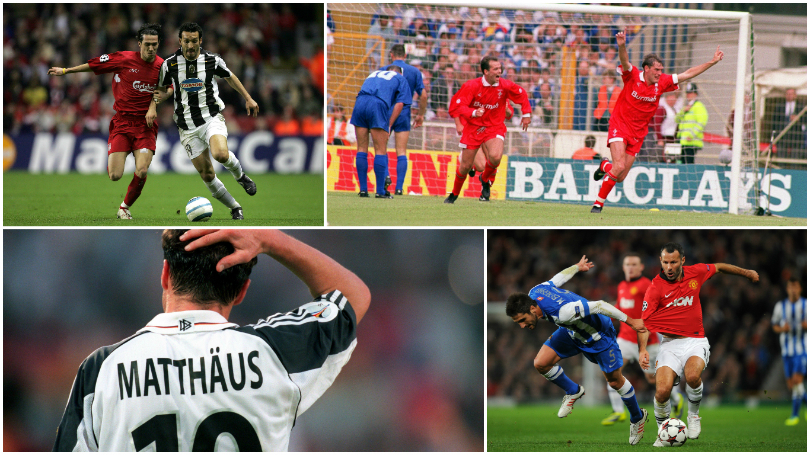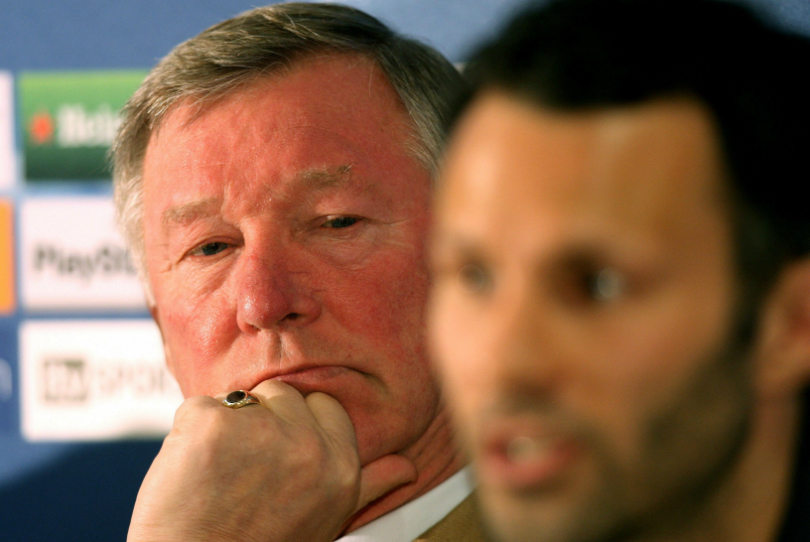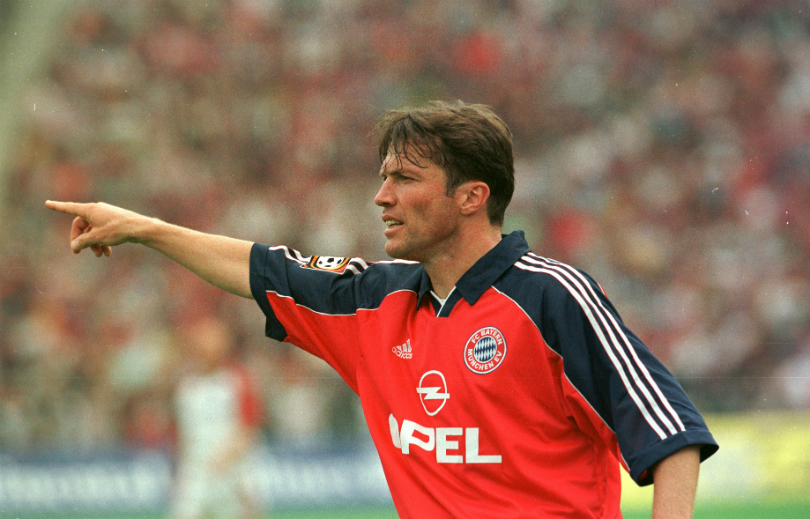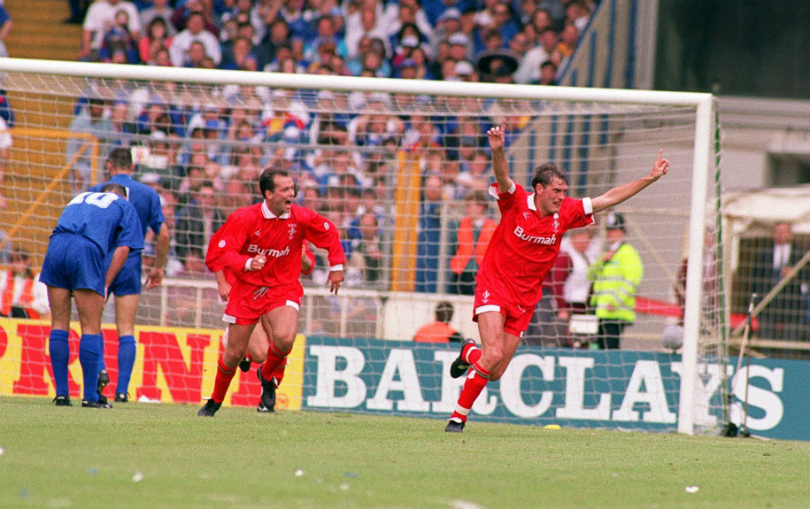Wayne’s (new) world: 4 other big-name players who changed position successfully
The Manchester United skipper impressed further back for England in Saturday’s Euro 2016 opener, and might need to continue doing it if he’s to prolong his career. Declan Warrington reflects on some who went before him...

Should Wayne Rooney start next season as he ended 2015/16 – as an improving central midfielder – there is little question his positional switch will have to be considered near-permanent.
The appointment of Jose Mourinho as Manchester United's manager and his previous interest in his new captain as a striker, of course, means it is far from unthinkable that the 30-year-old will return to his natural position in the final third.
Yet having long spoken of his belief that his future lies in deeper territory, and being increasingly used there by Louis van Gaal, Rooney on Saturday started England's Euro 2016 campaign as deep-lying playmaker. It worked: he used his vision and passing ability to target those further forward, and his experience and stamina to assist a vulnerable defence.
Arriving to join one first-half attack, Rooney tested Russia goalkeeper Igor Akinfeev with a threatening shot from the edge of the area; he also caught the eye with a fine long pass to Dele Alli shortly after contributing in defence.
Before kick-off Roy Hodgson had spoken of his belief that Rooney's passing ability and experience meant his selection in central midfield represented little risk, and so it ultimately proved.

The downlow on all the teams and more
Whether through the constraints imposed by Van Gaal's management or because of a lack of familiarity, Rooney the midfielder did not always convince during the past season, even if his on-field intelligence, technical ability and build-up play has long suggested it is something of which he should be capable.
It’s his natural ability, however, that makes him a candidate for conversion, as opposed to the physical qualities that, as one example, one-time striker Dion Dublin later used to effect in central defence. The same qualities ensured other players have similarly succeeded, and it’s those Rooney can learn from if Mourinho – and Hodgson – want the switch to become permanent.
Get FourFourTwo Newsletter
The best features, fun and footballing quizzes, straight to your inbox every week.
1. Ryan Giggs
Whilst his athleticism had waned, his vision and technical ability improved him into such a cultured central midfielder in the age of the 4-3-3 that he started the 2009 and 2011 Champions League finals
The contrast in the nature of Giggs's performances between his two most common roles demonstrated significant dedication to his craft, a previously unseen footballing intelligence and considerable thought for his future.
It was as an instinctive out-and-out winger, in the 1990s when unsophisticated 4-4-2 formations were most widely used, that Giggs truly established himself in the United team. He remained there when they won the Treble in 1999, through to them winning the 2007 Premier League title, from when his declining pace left him with little option but to reinvent himself to retain his first-team place.

The improvement in Giggs's delivery by 2007, in contrast to the inconsistent balls he would play a decade earlier, showed him to have improved as a footballer at the same rate his athleticism had waned. His vision and technical ability thereafter transformed him into such a cultured central midfielder in the age of the 4-3-3 that he started the 2009 and 2011 Champions League finals ahead of even the great Paul Scholes.
Giggs was no longer capable of receiving possession and using his speed to dribble into space beyond his two closest challengers; instead he could be seen beating them with a pass from the outside of his boot.
John Barnes and Bastian Schweinsteiger, incidentally, are further wingers who underwent similar conversions. Schweinsteiger excelled as the holding midfielder he is today, though Barnes was far from repeating Giggs' high-level success.
2. Lothar Matthaus
So impressive at centre-back, in 1999 and in the autumn of his career, he won the award for the Bundesliga's Footballer of the Year, making him the last defender to do so
In his youth, the retired Germany international convinced in both attacking and defensive midfield roles, and was regarded as one of the world's best at each. As his physical qualities declined, his exceptional tactical and footballing ability and intelligence ensured he'd continue to excel in central defence.
It was with Germany, Borussia Monchengladbach and then Bayern Munich that he so consistently impressed as the complete central midfielder that Inter brought him to Serie A in their pursuit of the Scudetto. Like so many of the finest (Rooney included), from an attacking midfield position he scored with both feet with a variety of finishes from a variety of distances.

His speed of thought, composure, perspective and ability to read the game meant that he proved equally convincing further back, and often as the closest player to the goalkeeper. So impressive was he there that, in 1999 and in the autumn of his career, he won the award for the Bundesliga's Footballer of the Year, making him the last defender to do so.
3. Glenn Hoddle
Hoddle's vision, positioning and ball-playing ability made him a successful player-manager-creative-sweeper and the catalyst for Swindon's unlikely promotion to the Premier League
The tale of how the former England international spent the years before his eye-opening time with Monaco playing midfield roles in rigid 4-4-2 formations for both club and country is one often told.
What is sometimes overlooked is the influence Hoddle’s time in France had on him, and even more so is the way he managed his growing injury problems by playing as a sweeper when he returned to England with Swindon in 1991.
It would be wrong to consider the reinvented Hoddle as a true defensive force, but playing alongside two career central defenders in a back three his vision, positioning and ball-playing ability made him a successful player-manager-creative-sweeper and the catalyst for Swindon's unlikely promotion to the Premier League. (Rooney similarly may struggle as one of two central midfielders, yet excel as one of three.)

The effortless elegance that inspired Dennis Bergkamp, coupled with his intelligence, ensured Hoddle succeeded further back in the same way other elite-level footballers – Philipp Lahm and Ruud Gullit being obvious examples – realised they also already possessed the skill set required to be re-positioned.
4. Gianluca Zambrotta
By the time of his departure for Barcelona in 2006, he was one of the world's leading full-backs
Juventus signed Italy's most promising right winger when, in 1999, they recruited the £12.5m Zambrotta from Bari.
By the time of his departure for Barcelona in 2006, he was one of the world's leading full-backs and part of the team that won that summer's World Cup, more commonly playing on the left than right.
It was no less a defensive specialist than Marcello Lippi who oversaw that switch for both club and country, and it came as a consequence of his comfort on both flanks, tactical intelligence and discipline, and of his ability to provide a convincing overlap from deep.
At his peak he was perhaps the finest full-back in the world, and his stamina, ability to play on either flank, and flexibility meant the adjustments needed were minimal.

